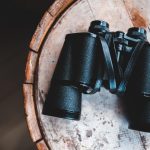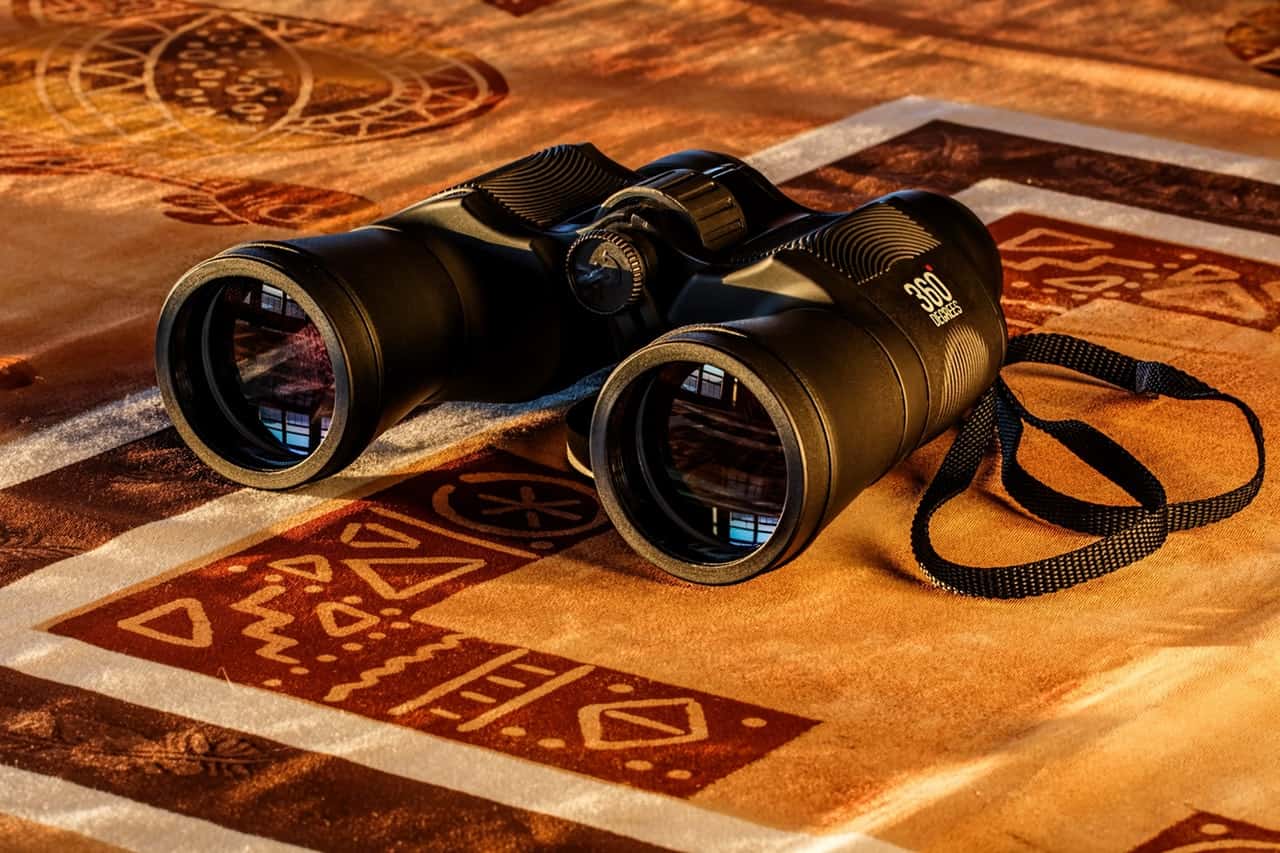Binoculars are a great tool for birding, spying, or just getting a better view of something from a distance. But can they see through walls? Or, more specifically, can binoculars help you peep through thick surfaces? If these questions are on your mind, here’s your answer:
No, binoculars cannot see through walls because they rely on light reflection. When you look through binoculars, what you’re actually seeing is magnified light reflected off of the object you’re looking at. So if there’s a wall between you and the object you’re trying to look at, the binoculars won’t show you anything inside the wall.
Today, we’ll explain what binoculars can and can’t see and help you get the most out of their abilities. So, stay tuned to learn more about your binoculars’ power!
Why Can’t Binoculars See Through Walls?
Binoculars use light to form an image. When you look through the binoculars, what you see is a magnified image of what is in front of the binoculars. You cannot see through walls with binoculars because walls block light.
Binoculars allow us to see objects that are far away. They work by gathering light from the object we are looking at and focusing it on our eyes. This makes the object appear larger and closer than it is. Walls are solid objects that block the passage of light. Consequently, binoculars cannot see through walls because they rely on light to produce an image. If no light passes through, then there will be no image for us to see.
So, why can’t we just use a more powerful light source to shine through the wall so we can see what’s on the other side? The answer has to do with how binoculars work. Here are some other reasons why binoculars can’t see through walls:
- Most walls are opaque, meaning they don’t allow light to pass, no matter how bright it is.
- Even if a wall is semi-transparent, it would likely diffract the light passing through it, making it look blurry.
- Binoculars rely on reflected light to work; they essentially magnify the light that hits them from an object. Since walls don’t reflect light (unless they’re made of highly reflective material like mirrors), binoculars wouldn’t be able to see anything on the other side.
Which Physical Factors Inhibit the Ability of Your Binoculars to see Through Walls?
There is still much to learn about the extent to which various physical factors may inhibit the ability of binoculars to see through walls. However, at this point, it is not yet known which specific factors play the most significant role in limiting this capability.
Further research is needed to determine which physical properties of objects (e.g., size, shape, density) affect our ability to see through walls with binoculars. But here are some common factors that can stop your binoculars from seeing through walls:
- The type of wall: Certain types of walls, like concrete, will block more light than others, making it harder to see through them.
- The thickness of the wall: A thicker wall will obviously block more light than a thinner one.
- The color of the wall: Darker colors will absorb more light than lighter colors, making it harder to see through them.
- The wall’s surface: A smooth surface will reflect less light than a rough surface, making it harder to see through opaque surfaces.
These factors can impact your thermal imaging and night vision binoculars’ performance by limiting their light reflection. However, even if these physical factors are out of the equation, your regular binoculars still can’t see through walls.
Also Read: Can You See Through Frosted Glass With Binoculars?
Can Thermal Imaging Binoculars See Through Walls?
No, the technology does not work that way. Thermal imaging detects infrared radiation emitted by all objects based on their temperatures. Wall materials like concrete, bricks, and drywall are very good at stopping infrared radiation from passing through them. This is why you can’t use a thermal imager to see through walls.
Thermal imaging binoculars allow you to see in the dark by detecting infrared radiation. However, they cannot see through walls because infrared radiation does not penetrate solid objects. Instead, it is reflected or absorbed. This is why you can use thermal imaging binoculars to see heat signatures but not through walls or other opaque surfaces.
While thermal imaging binoculars have their limitations, they are still a valuable tool for night vision. They can be used to detect people or animals in the dark and to find leaks or hot spots in buildings. In short, while thermal imaging binoculars cannot see through walls, you can still use them for surveillance tasks in the dark and understanding movement in your target FOV.
Also Read: How To Look Through Binoculars With Glasses?
Can Night Vision Binoculars See Through Walls?
No, night vision binoculars cannot see through walls. They use thermal imaging technology, which can detect heat signatures, to allow you to see in the dark. However, thermal imaging cannot penetrate solid objects like walls. If you want to sneak up on your foes or spy on your friends, you’ll need to find another way.
Night vision devices allow you to see in the dark by amplifying available light. However, they cannot enable you to see through walls. These binoculars also detect infrared light, which is invisible to the human eye. Infrared light is emitted by all objects, but it is reflected or absorbed more by some objects than others.
For example, concrete reflects very little infrared light, while glass is transparent. As a result, you can use night vision binoculars to see through glass walls, but not concrete ones. So before putting your spying hat on, know that night vision binoculars do not enable you to see through walls. These binoculars detect infrared light scattered differently by different materials and cannot wade through walls.
Also Read: How To Peep On Your Neighbors Using Binoculars
Are There Specialized Binoculars to See Through Walls?
There is no such thing as a pair of “X-ray vision” binoculars that can see through walls. However, some binoculars can help you see in low-light conditions, like night vision binoculars. If you’re looking for something to help you see in the dark, your best bet is to look for a pair of binoculars that offer night vision capabilities.
Many believe that binoculars can help you see through walls, but this is a myth. There are no specialized binoculars that allow you to see through walls as of now. Some high-end binoculars have better focusing and color differentiation ability, but they still can’t see through walls.
So far, there are no specialized binoculars that can see through walls. However, there are some theoretical ways to make this possible. One way would be to use a transparent material for infrared light, allowing you to see through walls if the other side is well lit. Another way would be to use a microscopy technique called super-resolution imaging, which can have resolutions down to the nanoscale.
These tips could potentially allow you to see through extremely thin walls, but there’s no guarantee. The reason why people might think this is because binoculars can magnify objects, making them appear larger and closer than they actually are. However, binoculars cannot see through solid objects like walls.
Also Read: Are There Any Good Binoculars For Spying?
Are There Any Goggles Or Optics Instruments That See Through Walls?
There may be some military applications that use this technology, but for the most part, it is not available to the public. The use of infrared and other types of radiation to see through walls is a fairly common practice in the military, but it is not something that is generally available to the average person.
There is no such thing as a perfect, foolproof way to see through walls. Even in the military, there are ways to defeat or circumvent wall-penetrating radar and other technology that enable soldiers to see enemy troop deployments behind walls.
Various scientific principles make it possible for energy waves to penetrate barriers like walls, but measurement difficulties and interference from other sources make it impractical for wide public use. There may be some civilian applications for this technology in the future, but it is still in its early stages and has not been widely released yet.
Conclusion
Binoculars are a great tool for spotting wildlife or getting a better view of distant objects, but there are limits to what they can see. They cannot, for example, see through walls. This is because binoculars work by gathering and magnifying light, and brick walls do not allow light to pass through them.
Some types of binoculars use other forms of energy to detect objects, such as thermal imaging and night vision binoculars. However, even these binoculars cannot see through brick walls. So if you’re looking for a way to spy on your neighbor, know that your binoculars can’t do it!

Binos enthusiast since I was 12 – A real expert in all things optics including rifle scopes and red dots. Live in Dubai & love writing, beaches and eating!






